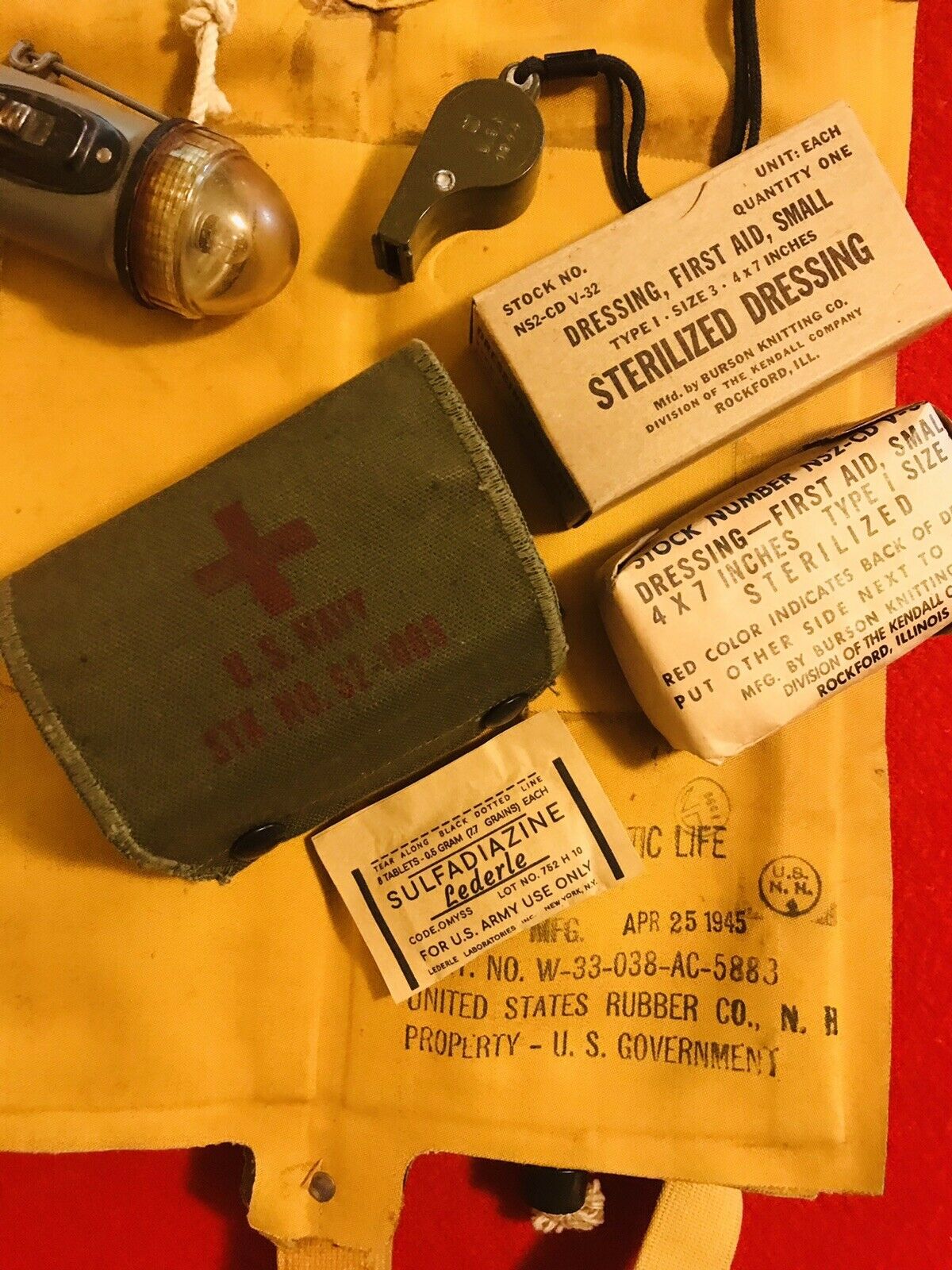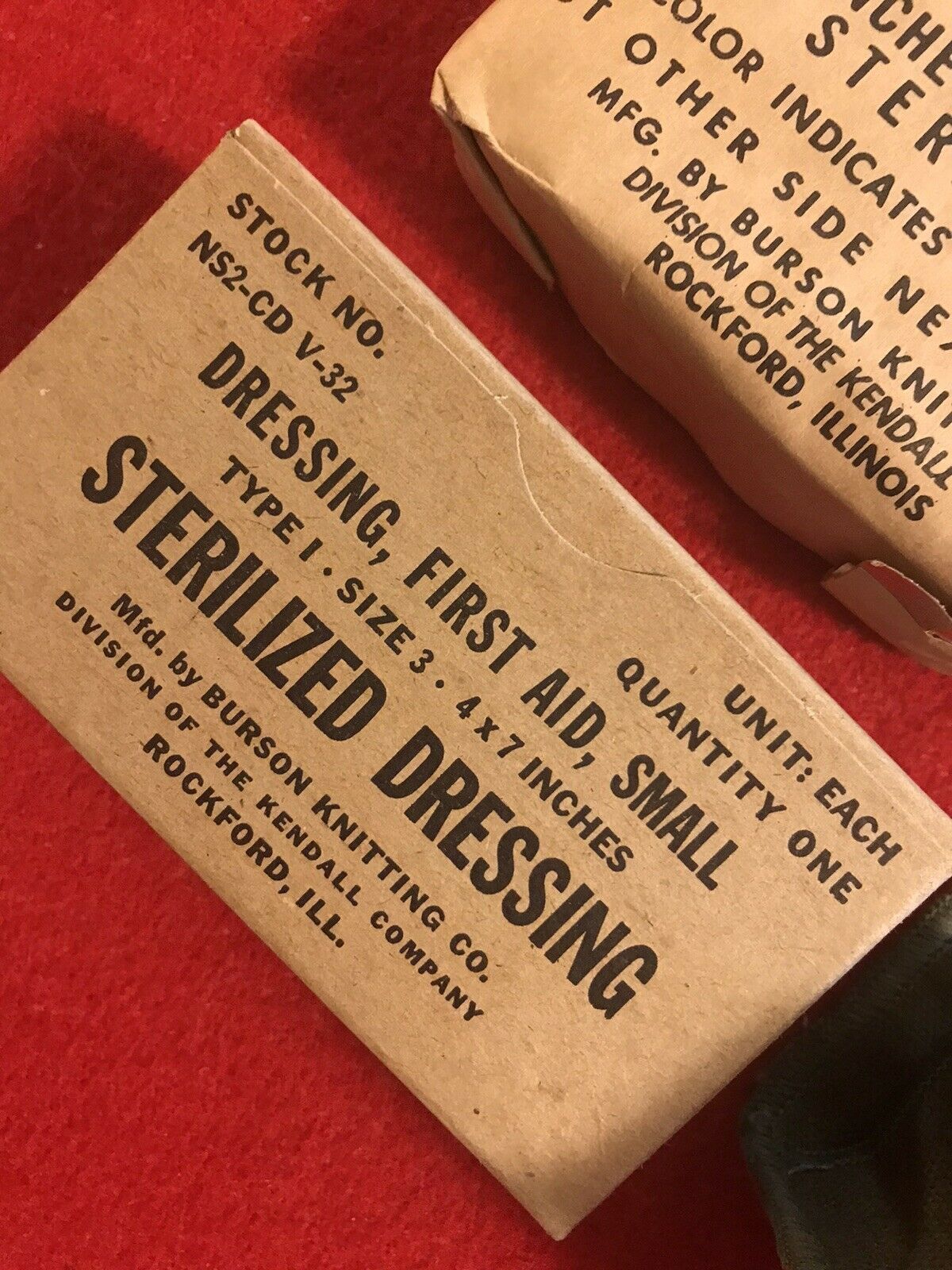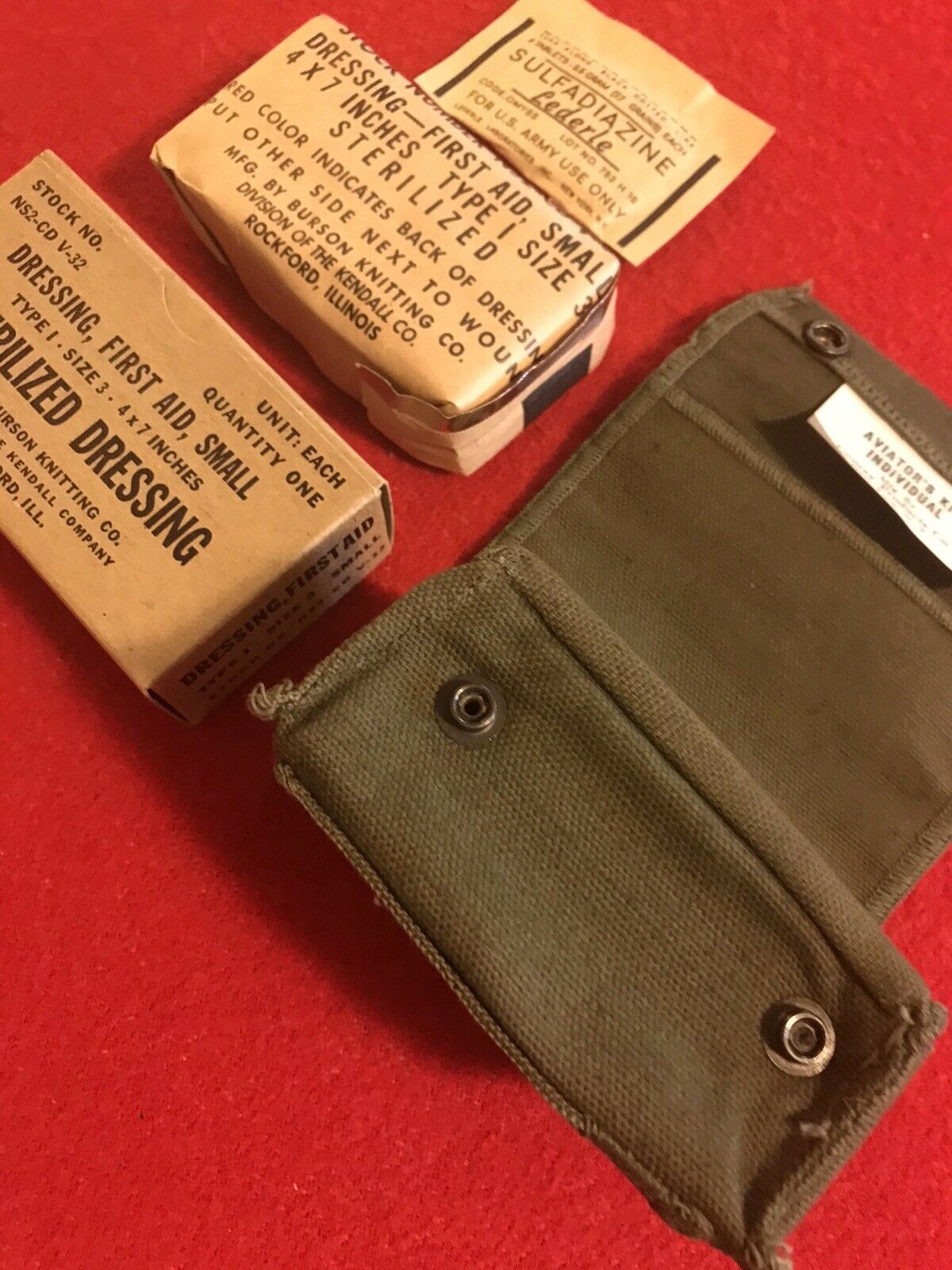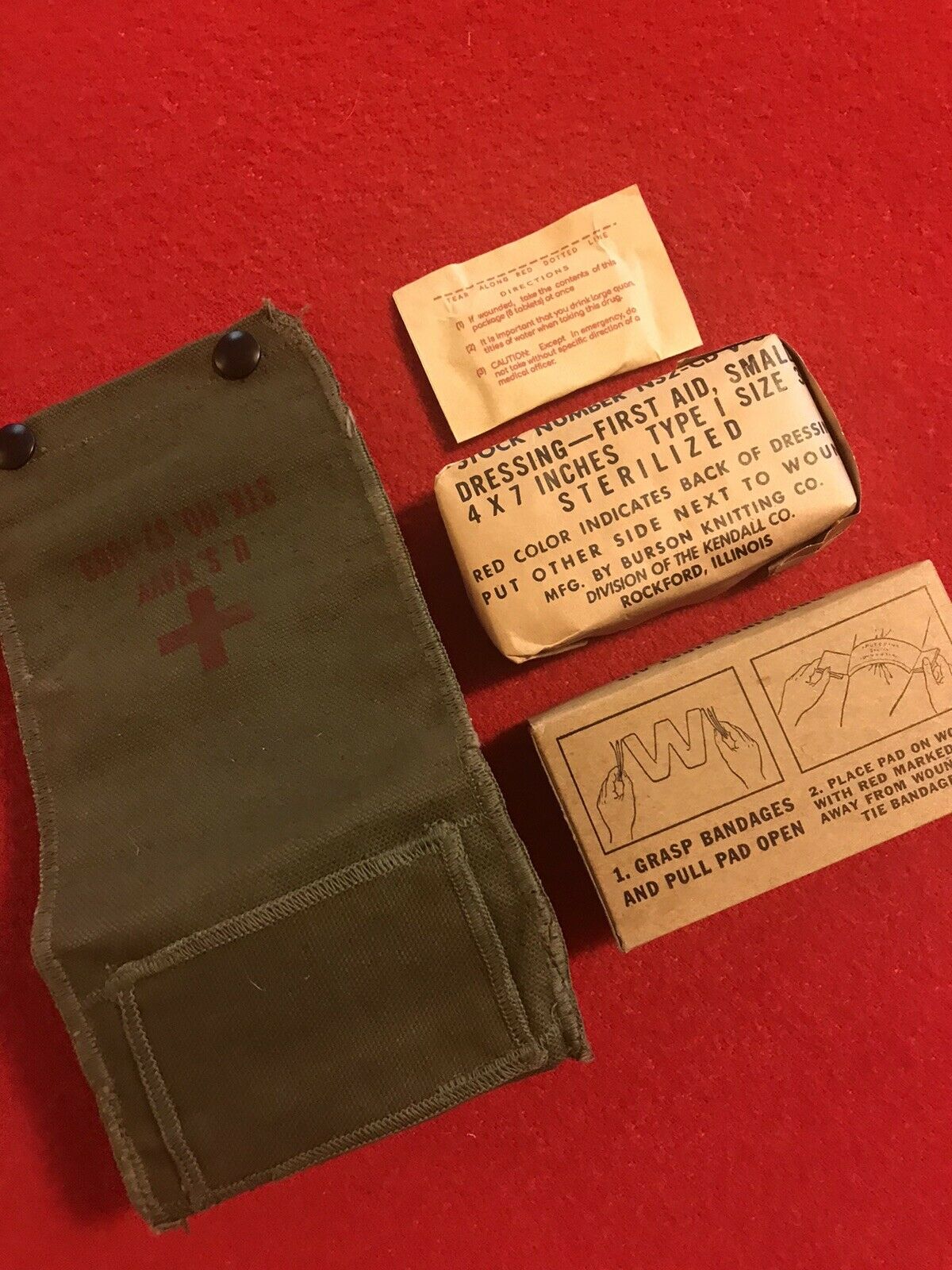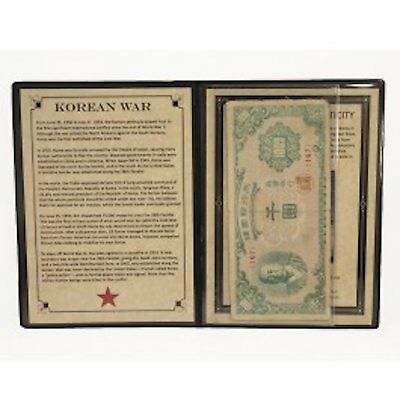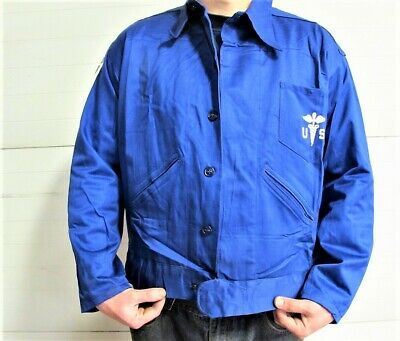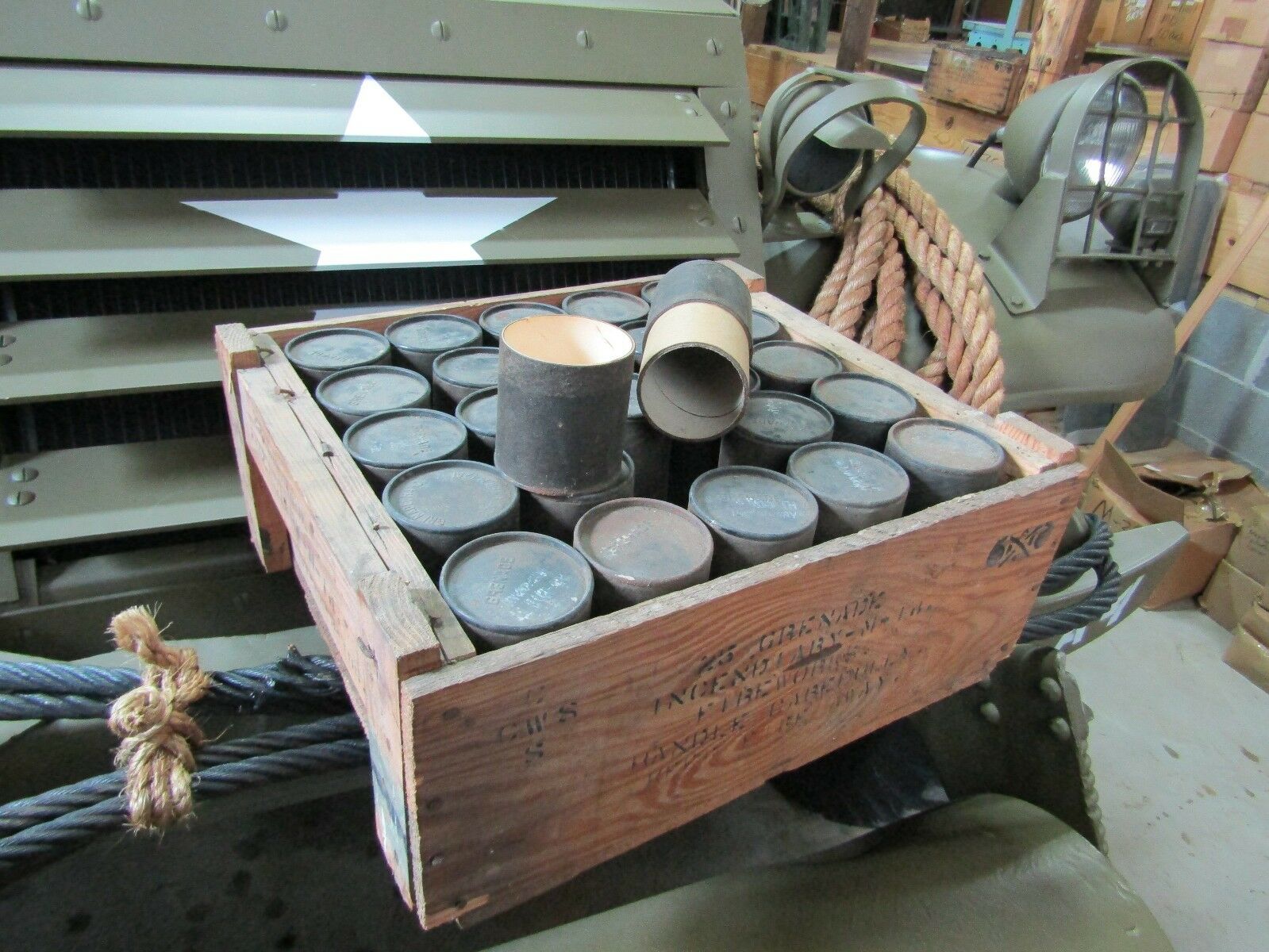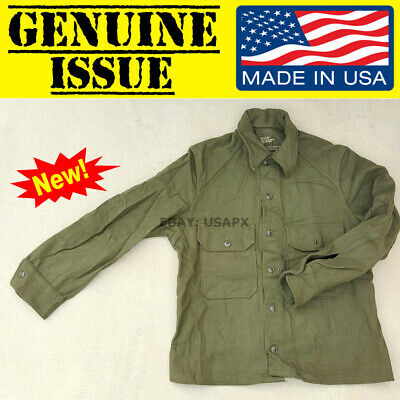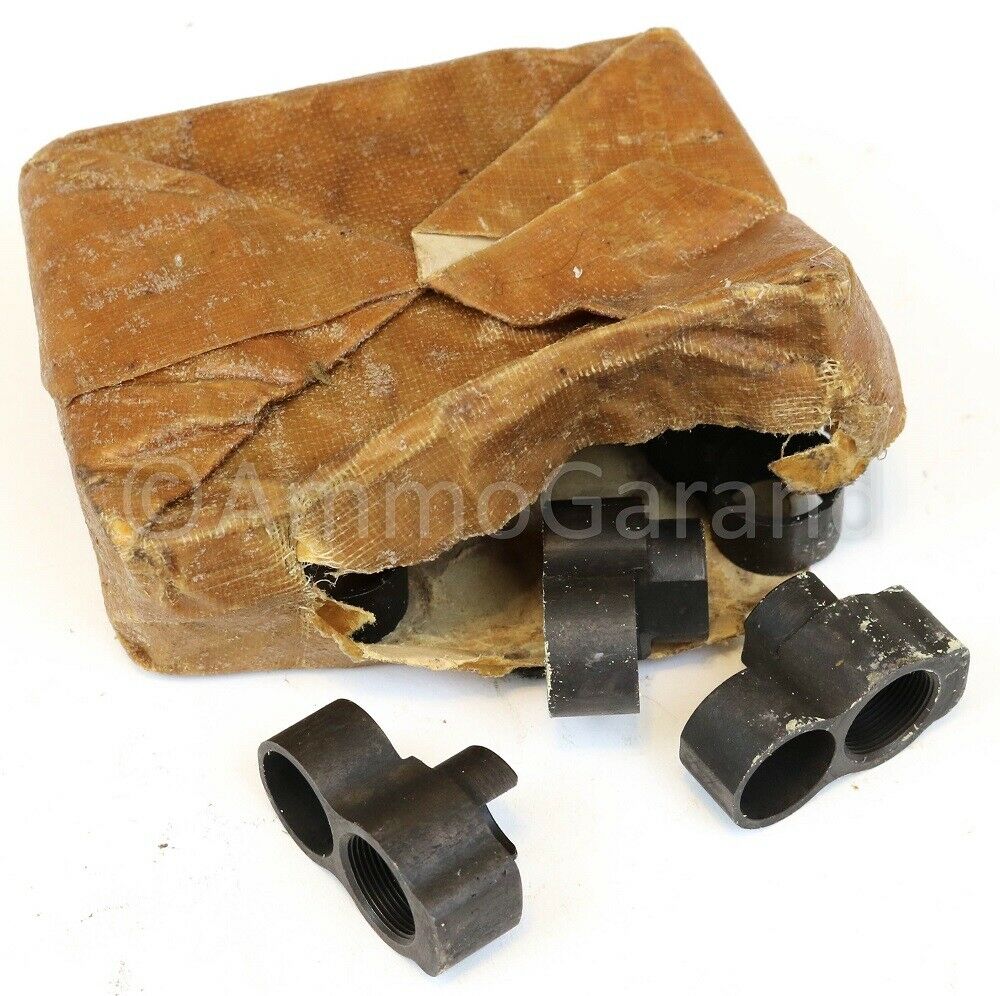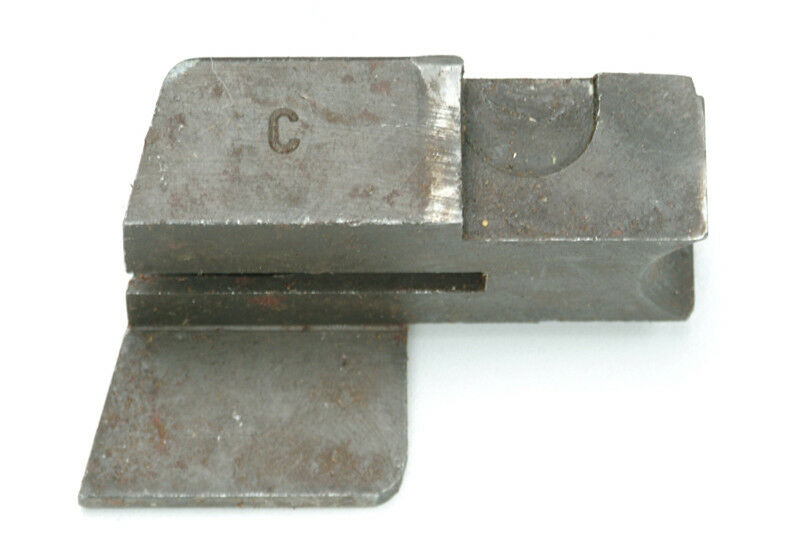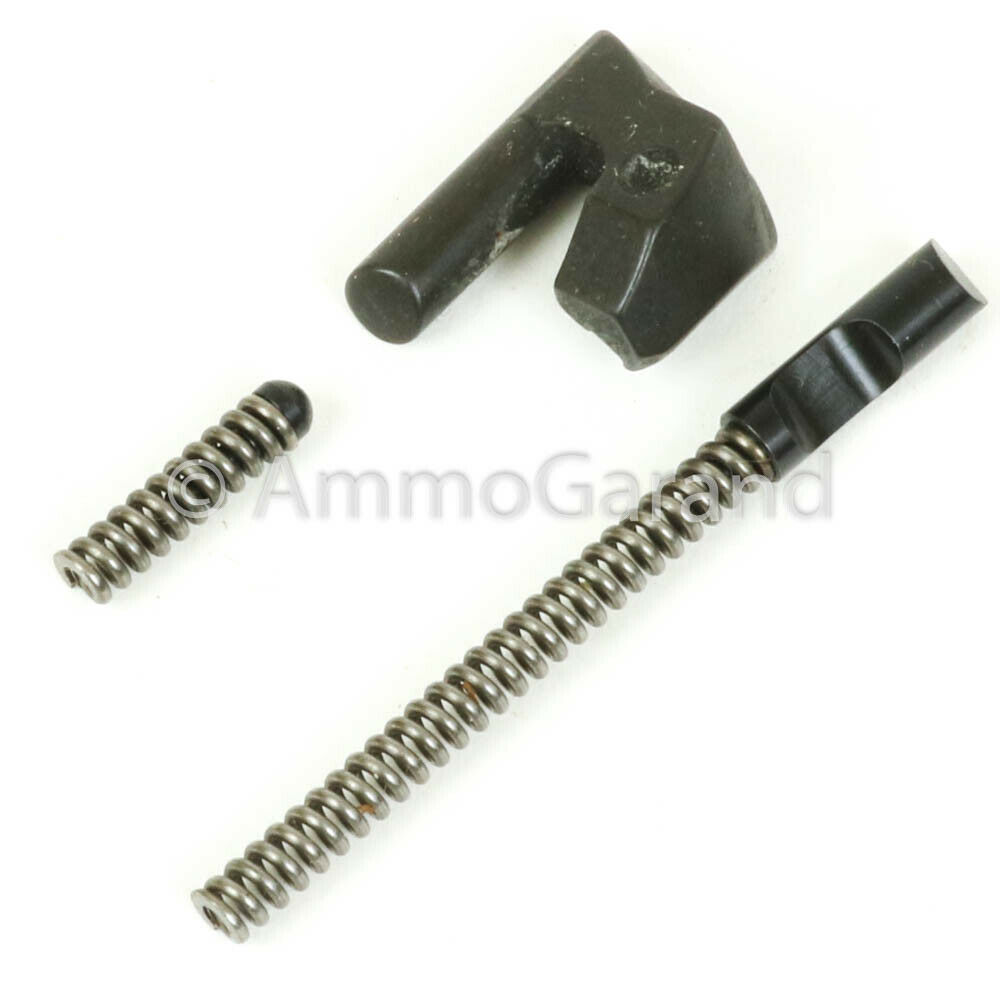-40%
USN “Aviator’s Kit Indiviual” & Dressing & LEDERLE (Replica) Wound Tablet NOS!!
$ 23.75
- Description
- Size Guide
Description
This SmallDark Shade OD#7 Canvas CASE
closes by means is two
9/16” Domed PRESS SNAPS.
The exterior of the Flap is
RED-INK
stamped with a
Red Cross
and the two lines of “
U.S. NAVY
” and the
STOCK
NUMBER
. The starched white fabric
CONTRACTOR
TAG
of the
Conray Products Co.
is sewn on the underside
“U.S.NAVY Aviator’s Kit Individual / STK. NO. S2-1083 / Mfg. By / Conray Products Co. / New York, N.Y.”
This item of
BuAero
gear carried by
USN
and
USMC
Carrier-based Aviators
dates from the Korean War — possibly late WW2– through the early Vietnam era.
During the Korean War
Marine
and
Naval
aviators in carrier-based
F4U CORSAIRS
and
AD SKYRAIDERS of the USS VALLEY FORGE
and
AIR GROUP 5 …
and
later
aviators of the
U.S. SEVENTH FLEET
cruising in the Yellow Sea and the off the coast in the Sea of Japan
each carried one of these
“U.S.NAVY Aviator’s Kits
,
Individual
.”
Some
300 carrier aircraft were usually on call each day, together amassing 1,727 days of attack missions!!
*****
The original contents contained in a small plastic box which has been replaced with the following:
(1) Included is a
U.S. Navy contract Wound Dressing
sealed in a waterproof
PAPER-FOIL LAMINATE
wrapper along with its Original
CARTON
with instructions.
“
DRESSING, FIRST AID, SMALL
STOCK NO. NS2-CD V-32
UNIT: EACH QUANTITY ONE
TYPE I - SIZE 3 - 4x7 INCHES
STERILIZED DRESSING
Mfd. by BURSON KNITTING CO.
DIVISION OF THE KENDALL COMPANY
ROCKFORD, ILL.”
****
(2) Also included in a
EXACT FACSIMILE
of a WW2
SULFADIAZINE Wound Tablet packet
…even the contents feels identical to the little Tablet “tray”
The packet is printed in
Black
and
Red
as was the original and reads,
“SULFADIAZINE
LEDERLE
8 TABLETS - 0.5 GRAM (7.7 GRAINS) EACH
CODE. OMYSS LOT 752 H 10
FOR U.S. ARMY USE ONLY
LEDERLE LABORATORIES INC. NEW YORK, N.Y.”
*****
from “Karl’s Korner”
THE
KOREAN
WAR
, by Karl Zingheim, June 7, 2018, Ship Historian,
THE
USS MIDWAY MUSUEM
CARRIER AVIATION’S BITTERSWEET CONFLICT
When an armistice that stopped the shooting during the Korean War took effect on 27 July 1953, carrier aviators could look back across the previous three years with mixed emotions. Undoubtedly there was relief in no longer having the guns firing, but the conflict ended largely where it started, both geographically and in a figurative sense, as an armed standoff, despite the
loss
of
358 carrier aircraft to hostile action
. There would have been bitterness as well over how unprepared America was to meet the unexpected communist onslaught in a faraway land, and in the scramble to support the desperate ground forces ashore, which required an exceptional commitment from the Reserves—predominantly veterans of the recently-won Second World War—who were pulled from their vocations at home and sent back to sea. However, for those looking ahead, there was reason for a peculiar gratitude, for the achievements during the Korean War saved carrier aviation itself from bureaucratic oblivion.
When North Korea invaded its neighbor on 25 June 1950, there was only a single carrier in the western Pacific. Worse, the rapid advance of the North Korean forces put a premium on close air support for the hard-pressed U. S. Army units sent to counter them, but
Air Force bases in Japan were too far away to permit the loiter time such missions often required. The arrival of the carrier Valley Forge and her Air Group 5 in early July provided air support from just off the coast with aircraft, such as the F4U Corsair and AD Skyraider, that was well suited to the task….
Over the course of the Korean War, some
46 percent of carrier aircraft sorties involved close air support.
This was particularly important during the mobile phase of the conflict’s first twelve months.
The Inchon landings on 15 September 1950 relied on carrier air cover as the amphibious troops pushed on to nearby Seoul. Carrier
aircraft kept pace with the haphazard advance into North Korea towards the Manchurian border.
When Red Chinese armies stormed across the Yalu River to drive back the United Nations forces, Marine and Navy carrier aircraft flew in atrocious winter weather to cover their withdrawal. The Navy’s first African-American carrier aviator, Ensign Jesse Brown, lost his life covering the retreat from the Chosin Reservoir. When the Chinese attempted to reinvade South Korea the following spring,
naval aircraft were on hand to stop the offensive in its tracks.
From the summer of 1951 until the armistice, the fighting ashore devolved into a static battlefront for hilltops, and trench warfare returned.
Interdiction
became an important new aerial mission as
thousands of sorties were launched from carriers to attack enemy supply depots, railways, and bridges to hamper the communist war effort. Eventually, the U. S. Seventh Fleet took to keeping two carriers cruising in the Sea of Japan, while Marines flying from smaller escort carriers in the Yellow Sea covered the opposite flank. Some 300 carrier aircraft were usually on call each day, together amassing 1,727 days of attack missions.
More than
400 carrier aviators
were lost in action, but the effort paid off. A truce went into effect after three years.



